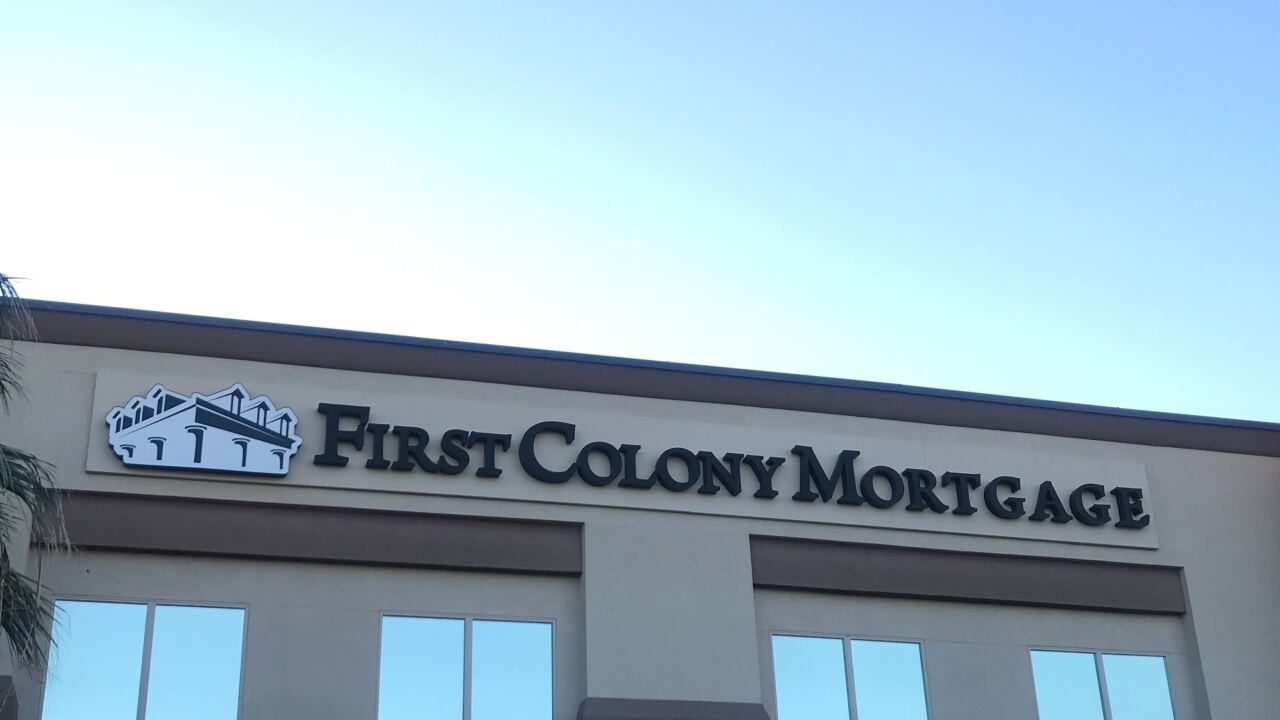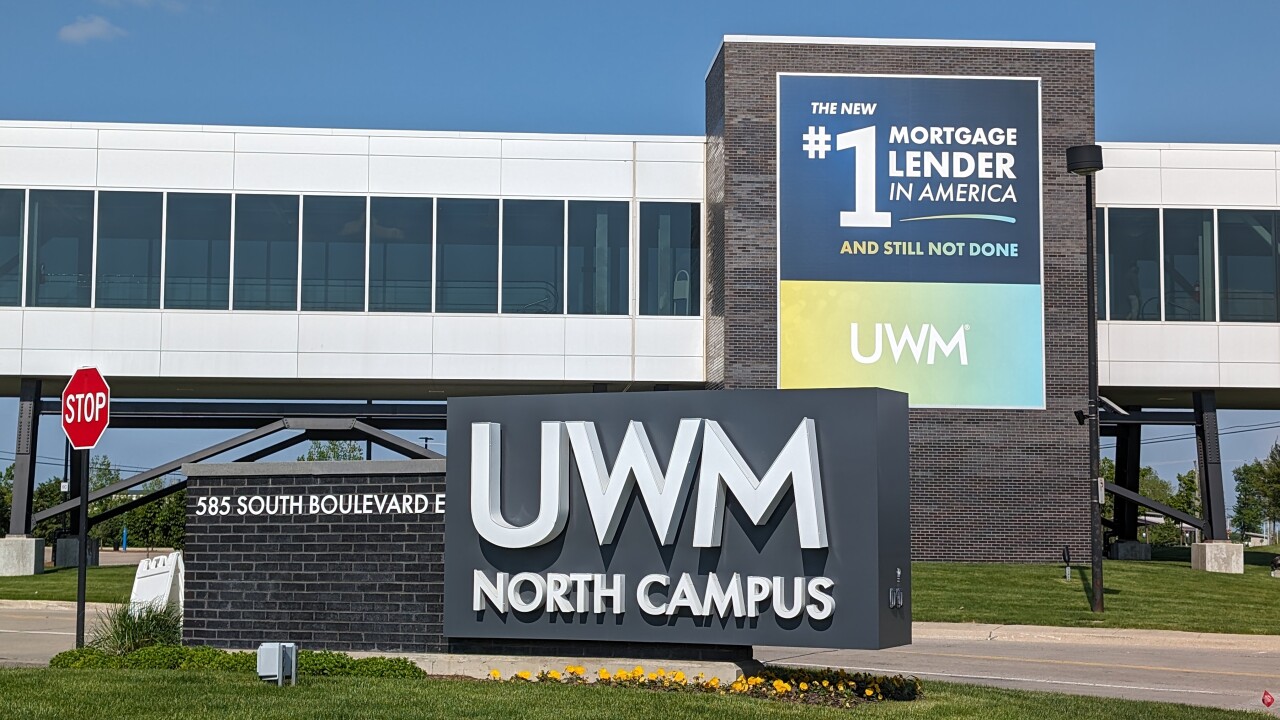
Supporters of the moves to enhance the availability of low-down-payment loans deny that the industry is taking on too much risk as a result of those moves
"There is a minimal connection between down payment and performance," said Brian Koss, the executive vice president of Mortgage Network. "Credit score, income and reserves have much more to say than down payment."
The Danvers, Mass., company, besides being a Fannie Mae and Federal Housing Administration lender, also participates in the Veterans Administration, U.S. Department of Agriculture Rural Development programs and state housing finance agency programs.
The government-sponsored enterprises
Mortgage Network would rather lend to a person who is making no down payment but has sufficient reserves in the bank rather than making the consumer exhaust those reserves to come up with a 5% down payment. That is more dangerous for lenders in Koss' view.
Phillip McCall, who has been in the mortgage business for 25 years, has seen the advantages and disadvantages of low-down-payment programs for lenders and for consumers.
"We've definitely learned with the availability of low-down-payment [loans], you increase bringing new homebuyers into the market. That source of down payment is a huge stumbling block for bringing people to homeownership," said McCall, the chief operating officer of Aces Risk Management, a quality control and audit technology company headquartered in Pompano Beach, Fla.
But lenders brought that down to requiring no down payment along with lower credit scores and other layering of risk which increased the danger associated with those products and contributed to the housing crisis, he said.
It was the layering of risk that caused problems with previous versions of low-down-payment mortgages, not the lack of borrower's equity in the property alone, Koss and McCall said.
"The less you have down, the firmer you should be on income, on credit, on assets and on employment. Those things have to be stronger. If you are weak in one spot, you have to make it up somewhere else," Koss said, adding that lenders need to practice what he called "good, old-school underwriting."
And part of that underwriting practice involves originators doing quality-control reviews before closing on 100% of the GSE 3%-down loans, at least for the first few months, McCall said.
Lenders want to take advantage of this in order to create more homeownership opportunities, as well as increase business.
So originators need to be mindful of "what do we need to do on a quality-control basis to be able to assure that the loans we are making meet the eligibility requirements of the GSEs but also are good loans that will perform," McCall said.
The only way for that to happen is to put an emphasis on pre-funding quality control to make certain the proper loan-manufacturing process is in place.
Some in the industry have expressed the view that the qualified mortgage and ability-to-repay rules implemented by the Consumer Financial Protection Bureau create a level of comfort and safety with the moves by Fannie Mae and FHA.
As underwriting guidelines expand, lenders need to be very cautious and take additional quality-control steps before funding, "especially in the beginning to get everybody properly trained and to confirm each organization is up to speed on the guidelines and the requirements and that these loans are good," McCall said.
Eventually lenders can roll back the quality-control sample, but for the first 90 days of originating 3%-down mortgages, originators need to get a number of these units processed, underwritten, ready for funding and "make sure that we 100% understand the risk we're taking on, and that we have the manufacturing process in place to put these loans together exactly as they should be," he explained.
The 100% sampling should be until the manufacturing process produces a defect rate that eliminated the risk of any ineligible loans being sold to Fannie Mae or Freddie Mac.
If a lender is still finding defects after 90 days of originating 3%-down mortgages, it should continue the increased pre-funding scrutiny, McCall added.
Some may continue to scrutinize most of these loans depending on their comfort level. His own view is that while there are costs for doing these reviews, they are well worth the investment.
Higher risk is why FHA had to take action regarding the monthly mortgage insurance premium, Koss said. Higher credit quality loans were being funneled to the conforming channel as the private mortgage insurers are insuring loans with a credit score as low as 680.
This change helps to keep more of the higher-credit-quality loans in the FHA book, including consumers looking to refinance an existing FHA loan using the Streamline channel.
Appraisers were among the scapegoats in the aftermath of the housing crisis for problems with the low-down-payment mortgages.
The moves by the GSEs and FHA will mean credit availability from those organizations will be at an all-time high, said Phil Huff, the CEO at Platinum Data Solutions in Aliso Viejo, Calif. "Thankfully, the tools to vet the accuracy and quality and appropriateness of an appraisal are more prevalent now than they were before."
This includes a tool that Platinum Data provides called FreeAppraisalReview.com. "The entire industry from Fannie Mae all the way down to the appraisers themselves [is] concerned about quality, and they're looking to use tools to make sure that the same thing doesn't happen in 2015 that happened in 2007.
"I think it is up to us as an industry to use the tools that are available to self-police the quality and accuracy of appraisal reports," by using those tools said Huff.
To those who say the mortgage industry is inviting another crisis, he replied: "Calmer heads will prevail. There will be a focus on quality like you've never seen in the appraisal industry." And that is being driven from the top of the chain, from
However, the industry needs to remember that the Collateral Underwriter system protects Fannie Mae's risk, not the lender's risk, he pointed out. So quality control still must be done as the lender remains responsible for the quality of the appraisal.
"The collateral is the third leg of the stool," Huff said. "We've verified for years that the borrower is who they say they are.
"We've verified that the borrower can repay the loan. But we've never actually verified the accuracy or the appropriateness of the appraisal itself. We should verify the third leg of the stool, also."
The goal of these changes is to attract more consumers to the home-purchase market.
While a down payment remains the biggest stumbling block with getting people into homes, the new factor, Koss noted, is that owning a home not a priority for the millennial generation.
Programs like conforming 3%-down mortgages and the reduction in the FHA monthly mortgage insurance premium will help jump-start home sales.
"Move a few more people over from that generation [from renting to buying] makes it cool again and then it has a shot of creating some momentum in the social media world" through posts by buyers using the hashtag #homeownership — that is what the industry is looking for, Koss said.
Has the mortgage industry learned from its past mistakes with low- (and even no-) down-payment mortgages? McCall believes so. At first lenders were diligent and careful about low-down-payment programs. But then the industry started layering risk — cutting scores and at the same time dropping the size of the minimum down payment, and playing with debt-to-income ratio to get a few more borrowers in.
The changes to both the conforming and FHA programs that stop the layering of risk mean "we have taken a very painful lesson and applied that into what we see now.
"If the industry is controlled in what we do, [low-down-payment lending] will be a success," he said.





